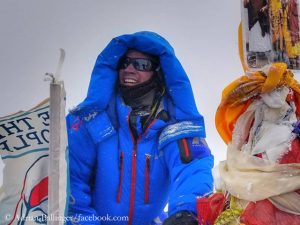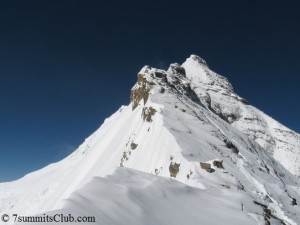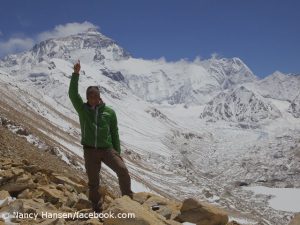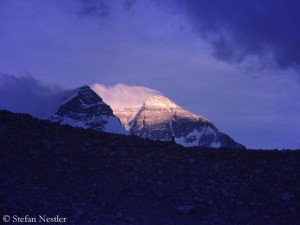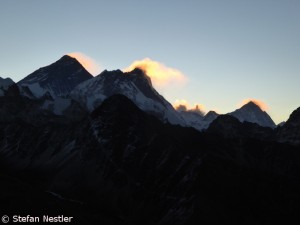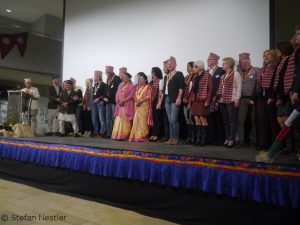On the short rope?
It is undisputed that Adrian Ballinger reached the summit of Mount Everest without bottled oxygen last Saturday. But a debate rose about how he did it. The trigger was my article about a conversation with Ralf Dujmovits on Monday, two days after his failed attempt without breathing mask on the north side of Everest at an altitude of 8,580 meters. During the satellite phone call, the 55-year-old German climber had accused Ballinger that the American had reported about his ascent in real time via the social networks, but had not mentioned some facts. On the descent, for example, Adrian had been led by an Ecuadorian mountain guide on the short rope, said Ralf. Ballinger’s team responded promptly.
Richards: “Adrian earned every step of his summit”
“I climbed Everest with him all the way up and down from BC, and I can say that he was never short roped on the descent as Ralf wrongly affirms on this interview,” wrote Esteban, called “Topo”, Mena, the mentioned guide from Ecuador, who works for Adrian Ballinger’s company Alpenglow Expeditions. “This information is not correct and should be corrected immediately.” Cory Richards – who had also accompanied Ballinger to the highest point, using bottled oxygen in the summit area because he didn’t feel well – disagreed with Dujmovits too: “Topo was there. His word is corroborated by Pasang and Palden. Ralph simply wasn’t there.” Dujmovits’ argument that Ballinger had been supported by a large team during his ascent and descent was “quite frankly, asinine,“ Cory continued. “Adrian earned every step of his summit.” He appealed to Dujmovits and Ballinger to be proud of their respective efforts instead of arguing. “There is no room for infighting in our tribe … it’s too small.”
Headline-grabbing picture
If you do not regularly follow what happens on Everest, you might be wondering what is so bad about going on the short rope. In the Alps, for example, rope teams often use this technique. Indeed, but on Everest everyone connects it to the recurring picture, which regularly makes headlines since the 1990s: In technically rather easy terrain, a Sherpa draws a visibly overchallenged client on the short rope towards the summit. The message is clear: Actually, this mountan is not the right place for the rear one. A good mountaineer, who is climbing Everest on his own responsibility, doesn’t need this – unless in case of emergency.
The last ten minutes to the summit
After the reactions of Ballinger’s team, I contacted Ralf Dujmovits again. He admits that he got a false information concerning the descent on the short rope but adheres to his fundamental criticism. “I asked both, Adrian and Cory, in depth, and I can tell you that Adrian was led by one of the Sherpas (Palden, Mingma, Pasang Rinji) on the short rope during the last ten minutes up to the summit. There are eyewitnesses,” Ralf writes to me. “Also this has nothing to do with self-reliant climbing. If Ballinger’s team was interested in a correct presentation, they would have published this fact on their own initiative.” That’s the central point of his criticism, says Ralf: “My point is that professionals, especially when they do so much media coverage, have to report correctly – about positive as well as negative things – instead of giving intentionally a false impression by omitting.”



